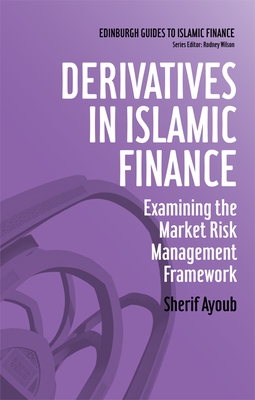Derivatives in Islamic Finance: Examining the Market Risk Management Framework by Sherif Ayoub

CHAPTER 1
INTRODUCTION
The twentieth century has certainly been an interesting
period in human history in terms of opportunities and challenges
in the economic and financial realms. The advent of
globalisation and the continued formation of new structures of
the international financial architecture (e.g., the rise
and fall of the Bretton Woods system, and the Washington
Consensus) along with the concomitant revolution in information
technology (IT) have contributed to not only increasing the profit
potential for businesses around the world, but
also to augmenting the complexity and uncertainty that they
have to contend with in the search for that profit.
The past century also saw the (re)introduction of Islamic
finance as defined by the economic doctrine of the Shari‘ah
with its three pillars of the prohibition of Riba (usury),
Gharar (excessive uncertainty) and Maysir (gambling).
For Riba, the fundamental basis for its proscription can
broadly be related to the elimination of the injustices
linked to the financial slavery of individuals by opportunist
money lenders who strive to benefit from the sanctity
of the repayment of debt obligations in Islam without any
of the commensurate risks that exist in the world of commerce.
The prohibition of Gharar is focused on the increase
of certainty within commercial transactions by reducing the
information asymmetry as well as the elimination of the
malicious devouring of the property of others by dishonesty
or deception or by taking advantage of informational
ignorance. As for Maysir, the objective of Islamic jurisprudence
in its prohibition is the promotion of a productive
work ethic that increases welfare (both at the individual
level and to society) as opposed to concentrating on the
unearned gains of gambling with all its associated antisocial behaviour.
Notably, within its relatively short history, modern
Islamic finance, which is built on the Islamic theory of Qiyas
(analogical reasoning) that is centred on linking modernday
financial transactions to the commercial practices of the
early Muslim community in the seventh century, has had
the challenging task of attempting to provide a sustainable
alternative to an advanced ‘conventional’ financial system
that is by no means static in nature in that it continues to
evolve to address, and arguably also to introduce, new issues
into the global financial markets.
At the heart of the dynamism of conventional finance
are theories built mainly on neoclassical economic foundations
that, with the assistance of mathematical computing
advances, have been significant in shaping the discourse in
the domain of risk and return. Specifically, conventional
finance has had the unique advantage of a fairly welldeveloped
universe of processes as well as instruments that
identify, measure and manage the various risk exposures
facing investors (especially entities in the real sector).
In contrast, when one examines the theory and practice
of risk management in Islamic finance, it can be discerned
that the Islamic finance industry has been in the difficult
position of endeavouring to reconcile the risk-management
demands by business entities in the global Islamic community
with the challenges posed by the seemingly rigid stances
Derivatives in Islamic Finance: Examining the Market Risk Management Framework by Sherif Ayoub




